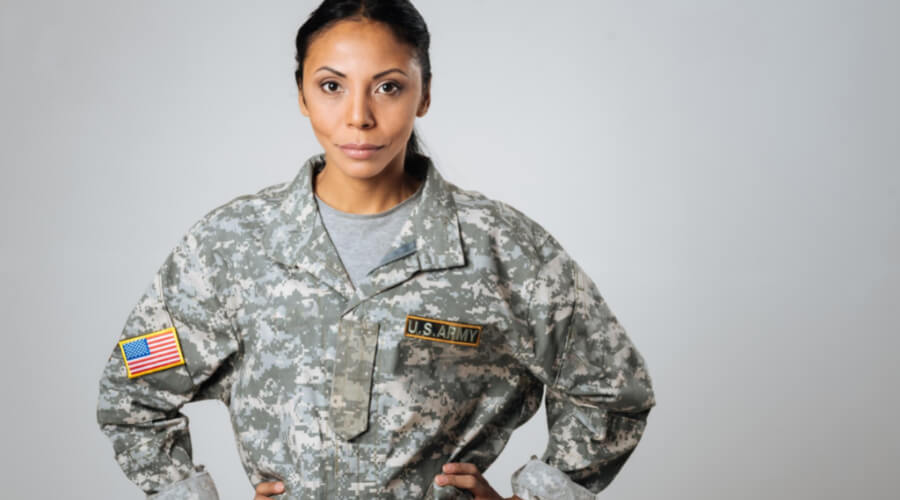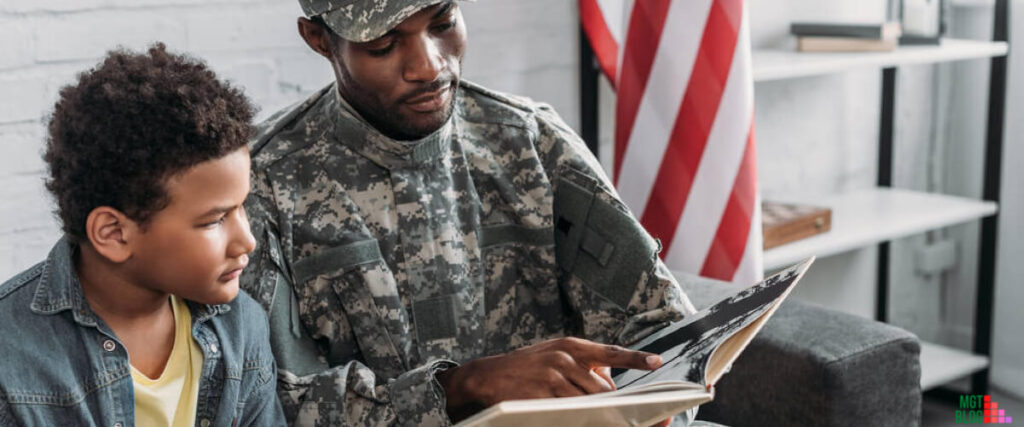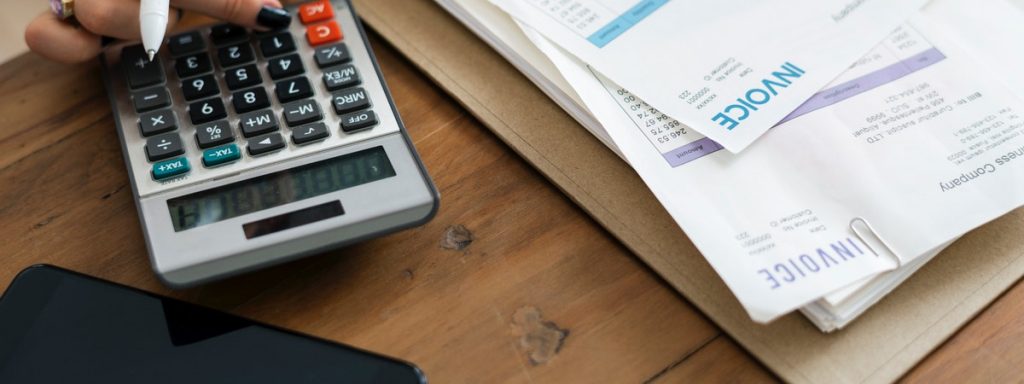The US military has various incentive programs for students who have joined the military with a student loan. There is a Military College Loan Repayment Program (CLRP) available that you can apply to pay off your student loan. Moreover, you can try National Defense Student Loan Discharge (NDSLD), Veterans Total and Permanent Disability Discharge, Public Service Loan Forgiveness (PSLF), etc. to pay off your student loan if you join the military after college.
Key Takeaways
- In the USA, student loan was first offered in 1958 under the National Defense Education Act (NDEA)
- If you sign up as a recruit in the US army then you can enroll in the Loan Repayment Program (LRP) Of the US army
- If you have a high loan balance then joining U.S. Navy will help you pay the loan quite easily
- If you already have accumulated student loan debt then Military College Loan Repayment Program (CLRP) will be the best option for you
Different Ways To Pay Off Loans If You Join The Military After College

The military offers various student loan repayment, forgiveness, or assistance programs but they vary depending on the branch of service. Moreover, there are changes in these types of programs depending on Congress. Here are some effective and proven ways you can pay your student loan after joining the Military.
1. Loan Repayment Program (LRP) Of US Army
If you sign up as a recruit in the US army then The United States Army offers the Loan Repayment Program (LRP). Here are some requirements of the Army’s LRP –
1. Soldier must agree to a term of service of three years or more, Soldier must decline enrollment in the Montgomery GI Bill in writing, using DD Form 2366
2. Soldier must have Loan Repayment Program guaranteed in writing in the enlistment contract
3. Soldier must be a non-prior service accession
4. Soldier must have a high school diploma and a score of 50 or higher on the Armed Forces Qualification Test (AFQT)
5. Soldier must enlist in one of the critical MOSs that qualifies for the program (Local Army recruiters have the current list, which changes quarterly)
Loans must be made, insured, or guaranteed under the Higher Education Act, Title IV, Part B, D, or E
Loans That Qualify For LRP
1. Loans guaranteed Federal Family Education Loan Program
2. Loans made under the William D. Ford Federal Direct Loan Program
3. A loan made under Federal Perkins Loans Program
4. Any loan incurred for educational purposes, etc.
2. Enlistment Bonuses From The U.S. Navy
The U.S. Navy also offers various enlistment bonuses for students who join the U.S. Navy. These enlistment bonuses are subject to changes and they include –
1. Advanced Electronics Computer Field (AECF-AEF) — $10,000
2. Air Rescue Swimmer (AIRR-ATF) — $36,000
3. Avionics Aviation (AV-SG) — $10,000
4. Cryptologic Technician Interpretive (CTI-ATF) — $25,000
5. Cryptologic Technician Networks (CTN-ATF) — $10,000
6. Explosive Ordnance (EOD-ATF) — $36,000
7. Hospital Corpsman (HM-ATF) — $25,000
8. Navy Diver (ND-ATF) — $36,000
9. Nuclear Field (NF) — $38,000
10. Special Warfare Boat Operator (SB-ATF) — $36,000
11. Sub Electronics Computer Field (SECF-5YO) — $10,000
12. Special Warfare Operator (SO-ATF) — $36,000
So, if you check the above incentives then you would understand that if you have a high loan balance then joining U.S. Navy will help you pay the loan quite easily. Usually, not all military career fields offer enlistment bonuses therefore you should grab the opportunity from the Navy.
3. Military College Loan Repayment Program (CLRP)

If you have already accumulated student loan debt then you can apply for The Military College Loan Repayment Program (CLRP). Moreover, if you are planning on joining the active-duty military then it will be the best option for you. Some eligibility requirements of this program are –
1. You have to be in a Military Occupational Specialty (MOS) that’s eligible for CLRP
2. You must have a high school diploma – not a GED or equivalency test
3. You must have a loan that is qualified for CLRP
4. You must score at least a 50 on the Armed Forces Qualification Test
5. Your enlistment contract must include CLRP participation
Here is the list of loans that qualifies for the CLRP Program –
1. Stafford Student Loans – AKA Guaranteed Student Loans (GSLs)
2. Auxiliary Loan Assistance for Students (ALAS)
3. Consolidated Loan Program loans – Forgiveness only covers the related education expenses, not other costs)
4. Parents Loans for Undergraduate Students (PLUS) – Unfortunately, these must be incurred for the use of the individual contracted to the program, and forgiveness programs cannot be used for military dependents (like spouses or children)
5. Federally Insured Student Loans (FISLs)
6. Supplemental Loans for Students (SLSs)
7. Perkins Loans – AKA National Direct Student Loans (NDSLs)
The amount of money you can get from the CLRP depends on which part of the military you’re in and whether you are on active duty or in the reserves. Here is the overall of the CLRP depending on the various branch of the military.
Army: If you are an active-duty army officer then you are eligible for up to $65,000 in student loan repayment assistance. Moreover, you have to enlist for at least three years to qualify for the loan repayment program. After completing the first year of service, the army will pay 33.33% of your outstanding principal student loan balance or $1,500, whichever is greater. The rest of the amount will be paid in the next two years.
Army Reserves: If you are in army reserves then you might receive up to $20,000 in student loan repayment assistance. You have to enlist for at least six years. After completing your first year, the Army will pay off 15% of your outstanding loan balance or $1,500, whichever is greater. You will be paid for next year until you reach the $20,000 cap.
Navy: In the Navy, you have to enlist for at least four years to become eligible for this program. You will get the same benefit as Army members.
Navy Reserves: The CLRP is also available for Navy Reserve members and the facilities are the same as the Army Reserves but the lifetime benefit is capped at $10,000 instead of $20,000.
Air Force: In Air Force, you might be qualified for up to $10,000 in student loan repayment assistance if you enlist for at least three years. First-year, you will get 33.33% of your outstanding principal balance or $1,500 which is greater. Next, you will get paid every year until your loan is paid off or you hit the $10,000 cap.
Marines: Unfortunately, there is no CLRP available for Marines.
National Guard: In the national guard, you will be able to cover up to $50,000 in student loan repayment assistance if you enlist for at least six years. However, in the national guard qualification requirements are very strict compared to other branches of the military. Moreover, the facilities also differ depending on the prior-service members, non-prior service soldiers, and current National Guard members.
Coast Guard: In cost guard, you will be offered up to $30,000 in student loan repayment assistance as a new member. After completing the first year of service, you will be qualified for up to $10,000 and you will receive benefits up to six years if you don’t reach the $30,000 limit.
4. National Defense Student Loan Discharge (NDSLD)
You can also be eligible for partial student loan cancellation under the National Defense Student Loan Discharge (NDSLD) program. But you have to serve for at least one full year in imminent danger or hostile fire areas. If you think that you can qualify for NDSLD then you have to fill out the appropriate paperwork as well as write a letter explaining why you would qualify for the program. You can contact your servicer to determine how much of your student debt can be paid via NDSLD.
5. Veterans Total And Permanent Disability Discharge
If you have a student loan and somehow become permanently disabled while in the line of duty then the USA government will discharge all of your federal student loans. In order to qualify for this program, you must have a documented service-related disability and be deemed permanently disabled by the Department of Veterans Affairs.
6. Public Service Loan Forgiveness (PSLF)
This program is available not only for military members but also for individuals like doctors, teachers, and government workers. You must have a qualifying federal student loan and a qualifying repayment plan to become eligible for this program. Moreover, you have to work for a qualifying employer for at least 10 years to qualify for this program. You have to submit the appropriate paperwork annually and make a score of 120 on-time student loan payments. Once, all the formalities are done, you can apply for PSLF. The authority will check your paperwork and if everything is ok then the federal government will forgive any outstanding student loan balance of yours.
The Post-9/11 GI Bill And The Benefits
This bill became effective on August 1, 2009, and it has some amazing education benefits packages. Initially, this bill was signed into law in 1944. This program is available for veterans who have served after September 10, 2001, with at least 90 days of continuous service. According to Veterans Affairs, at least one of these must be true for you to qualify for this bill –
1. You served at least 90 days on active duty (either all at once or with breaks in service) on or after September 11, 2001, or
2. You received a Purple Heart on or after September 11, 2001, and were honorably discharged after any amount of service, or
3. You served for at least 30 continuous days (all at once, without a break in service) on or after September 11, 2001, and were honorably discharged with a service-connected disability, or
4. You’re a dependent child using benefits transferred by a qualifying Veteran or service member
If you fulfill any of the above requirements and qualify for the Post-9/11 GI Bill then here are the benefits you can get for up to 36 months –
1. If you qualify for maximum benefits then this bill will cover the full cost of public, in-state tuition, and fees.
2. If you’re in school more than half the time then this bill will base your monthly housing allowance on the cost of living where your school is located.
3. You can receive up to $1,000 per school year as money for books and supplies.
4. You can receive a one-time payment of $500 to move from a rural area to go to school
Final Thoughts
Finally, if you are a military member, a veteran, or a college student with a student loan and want to join the military then you can easily qualify for any of the above programs and pay your student loans without any difficulty. Make sure, you consider and explore every available option before enrolling in a loan forgiveness program.
References:
1. https://www.todaysmilitary.com/education-training/paying-college
2. https://www.bumc.bu.edu/osfs/resources/flp/military/
Last Updated on October 31, 2022 by Magalie D.

Magalie D. is a Diploma holder in Public Administration & Management from McGill University of Canada. She shares management tips here in MGTBlog when she has nothing to do and gets some free time after working in a multinational company at Toronto.





